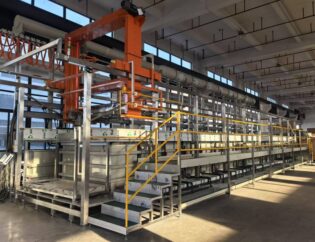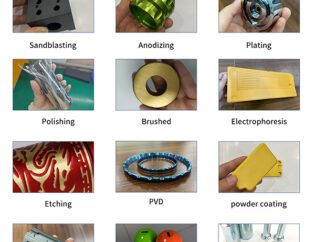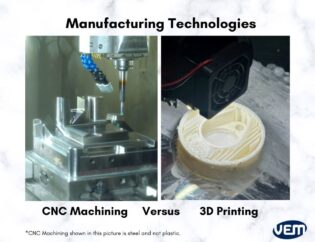Rapid plastic prototyping is revolutionizing the way products are designed and developed across various industries. This innovative approach allows for quick iterations and modifications, significantly reducing the time from concept to market. As businesses strive for efficiency and creativity, understanding rapid prototyping becomes essential for staying competitive.
In this guide, readers will explore the fundamental techniques and technologies behind rapid plastic prototyping. From 3D printing to injection molding, we will delve into the processes that enable rapid design validation and testing.
Additionally, the guide will cover best practices for selecting materials and tools, ensuring that your prototypes meet both functional and aesthetic requirements. By the end, readers will be equipped with the knowledge to implement rapid prototyping effectively in their projects, fostering innovation and accelerating product development.
A Comprehensive Guide to Rapid Plastic Prototyping
Do you have a great idea for a new product but need to test out a few different versions? Perhaps you need to create multiple examples of your product to show to investors. Either way, rapid plastic prototyping will help you develop your product and make the leap from design to mass production with lower risk. This guide will explore the various methods, technical features, and benefits of rapid plastic prototyping.
Understanding Rapid Plastic Prototyping
Rapid plastic prototyping is the process of quickly creating a scale model of a physical part using various manufacturing techniques. This approach accelerates the entire product development cycle, allowing engineers and designers to test and iterate on their designs efficiently. The most common methods include 3D printing, CNC machining, injection molding, and vacuum casting.
Technical Features of Rapid Prototyping
The technical features of rapid prototyping vary depending on the method used. Below is a comparison table highlighting the key features of each technique:
| Feature | 3D Printing | CNC Machining | Injection Molding | Vacuum Casting |
|---|---|---|---|---|
| Speed | Fast (hours to days) | Moderate (days) | Slow (weeks) | Fast (days) |
| Cost | Low to moderate | Moderate to high | High upfront costs | Moderate |
| Material Variety | Limited (plastics) | Wide (various plastics) | Wide (various plastics) | Limited (resins) |
| Surface Finish | Moderate | High | Excellent | Good |
| Complexity | High | Moderate | Low | Moderate |
| Production Volume | Low to medium | Low to medium | High | Low to medium |
Types of Rapid Prototyping
Different rapid prototyping methods cater to various needs and applications. Below is a comparison table summarizing the main types of rapid prototyping:
| Method | Description | Advantages | Disadvantages |
|---|---|---|---|
| 3D Printing | Uses additive manufacturing to create parts layer by layer. | Fast, cost-effective for small runs. | Limited material options and surface finish. |
| CNC Machining | Subtractive manufacturing that carves parts from solid blocks. | High precision and excellent surface finish. | Slower and more expensive for small runs. |
| Injection Molding | Injects molten plastic into molds to create parts. | Ideal for high-volume production. | High initial costs and longer lead times. |
| Vacuum Casting | Creates silicone molds from a master prototype for casting parts. | Quick and cost-effective for small batches. | Limited to visual prototypes, not functional. |
Benefits of Rapid Prototyping
Rapid prototyping offers numerous advantages, including:
- Speed to Market: Rapid prototyping allows for quick iterations, enabling faster product development and market entry.
- Cost Efficiency: By identifying design flaws early, companies can save on costly production errors.
- Design Flexibility: Designers can easily modify prototypes based on feedback, ensuring the final product meets user needs.
- Enhanced Collaboration: Prototypes facilitate better communication among team members and stakeholders, leading to improved project outcomes.
Applications of Rapid Prototyping
Rapid prototyping is widely used across various industries, including:
– Medical Devices: Companies like www.protolabs.com utilize rapid prototyping to develop and test medical devices quickly.
– Consumer Electronics: Rapid prototyping helps in creating functional prototypes for electronics, ensuring they meet market demands.
– Automotive: Manufacturers use rapid prototyping to test components for traditional, electric, and autonomous vehicles.
– Aerospace: Prototyping is crucial for developing high-quality components that meet stringent industry standards.
Choosing the Right Prototyping Method
Selecting the appropriate rapid prototyping method depends on several factors, including:
– Project Requirements: Consider the complexity, volume, and material needs of your project.
– Budget: Evaluate the costs associated with each method to find the most cost-effective solution.
– Timeline: Determine how quickly you need the prototypes and choose a method that aligns with your deadlines.
For instance, if you need a quick prototype for a consumer product, 3D printing from www.rapiddirect.com may be the best option. Conversely, for high-volume production, injection molding from www.kemalmfg.com could be more suitable.
Conclusion
Rapid plastic prototyping is an essential tool for product development, enabling companies to test and refine their designs quickly and efficiently. By understanding the various methods and their applications, businesses can make informed decisions that enhance their product development processes. Whether you are a startup or an established company, leveraging rapid prototyping can significantly improve your chances of success in the market.
FAQs
1. What is rapid prototyping?
Rapid prototyping is the process of quickly creating a scale model of a physical part using various manufacturing techniques, allowing for fast iterations and testing.
2. What are the main methods of rapid prototyping?
The main methods include 3D printing, CNC machining, injection molding, and vacuum casting, each with its own advantages and disadvantages.
3. How does 3D printing work?
3D printing uses additive manufacturing to create parts layer by layer from a digital model, making it suitable for complex designs and quick iterations.
4. What industries benefit from rapid prototyping?
Industries such as medical devices, consumer electronics, automotive, and aerospace benefit significantly from rapid prototyping for product development.
5. How can I choose the right prototyping method for my project?
Consider factors such as project requirements, budget, and timeline to select the most suitable rapid prototyping method for your needs.





